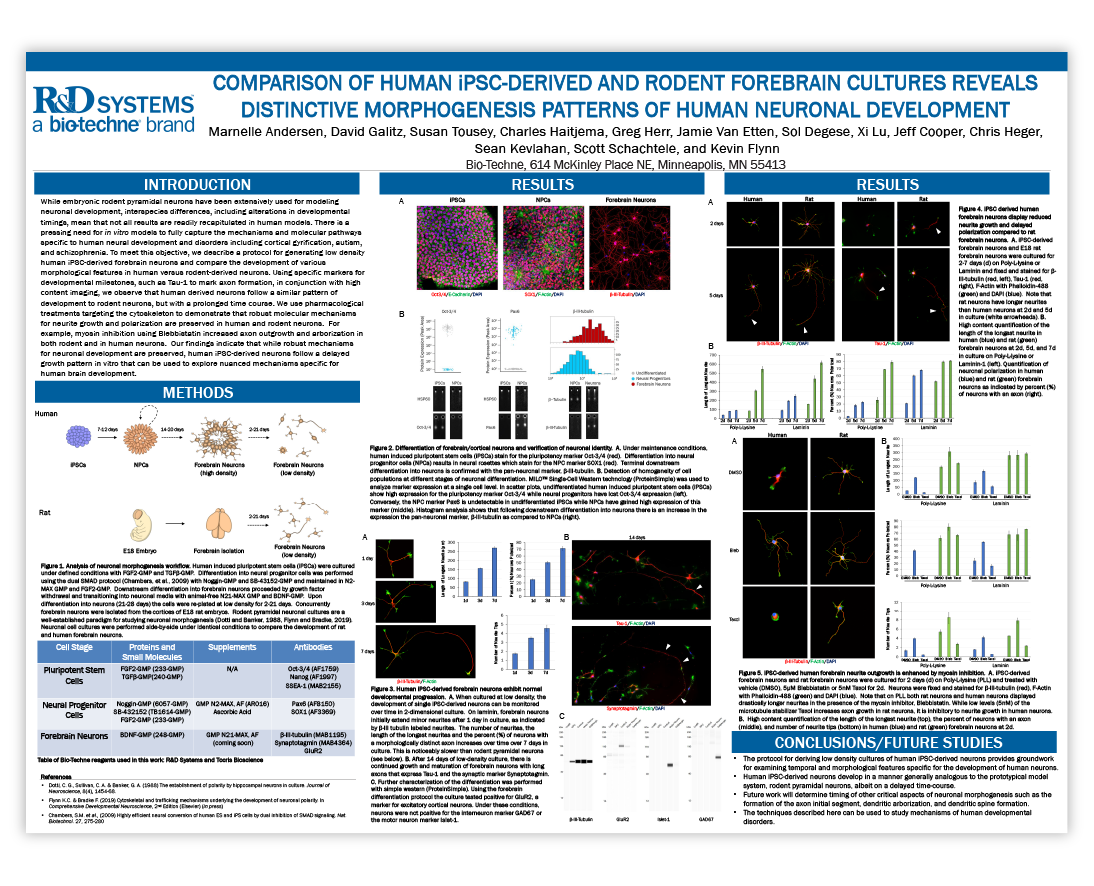Comparison of Human iPSC-Derived and Rodent Forebrain Cultures Reveals Distinctive Morphogenesis Patterns of Human Neuronal Development
by Marnelle Andersen et al..
Scientific Meeting PostersEmbryonic rodent pyramidal neurons have been extensively used for modeling neuronal development. Despite their widespread use, interspecies differences, notably alterations in developmental timings, mean that not all results are readily recapitulated in human models.
Recognizing the critical need for in vitro models that accurately capture the mechanisms and molecular pathways specific to human neural development, we created a protocol for generating low density human iPSC-derived forebrain neurons. These could then be utilized to compare the development of various morphological features between human- and rodent-derived neurons.
Download this neuronal development poster to find out how:
- Specific markers for developmental milestones, combined with high content imaging, were used to measure development patterns in human and rodent forebrain neurons
- Pharmacological treatments targeting the cytoskeleton demonstrated the molecular mechanisms for neurite growth and polarization
- Myosin inhibition affected neurite outgrowth in human and rat forebrain neurons
